12 start with S start with S
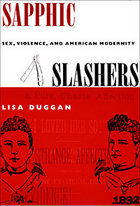
Situating this story alongside simultaneously circulating lynching narratives (and its resistant versions, such as those of Memphis antilynching activist Ida B. Wells) Duggan reveals how stories of sex and violence were crucial to the development of American modernity. While careful to point out the differences between the public reigns of terror that led to many lynchings and the rarer instances of the murder of one woman by another privately motivated woman, Duggan asserts that dominant versions of both sets of stories contributed to the marginalization of African Americans and women while solidifying a distinctly white, male, heterosexual form of American citizenship. Having explored the role of turn-of-the-century print media—and in particular their tendency toward sensationalism—Duggan moves next to a review of sexology literature and to novels, most notably Radclyffe Hall’s The Well of Loneliness. Sapphic Slashers concludes with two appendices, one of which presents a detailed summary of Ward’s murder, the trial, and Mitchell’s eventual institutionalization. The other presents transcriptions of letters exchanged between the two women prior to the crime.
Combining cultural history, feminist and queer theory, narrative analysis, and compelling storytelling, Sapphic Slashers provides the first history of the emergence of the lesbian in twentieth-century mass culture.
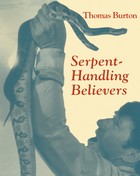
In some remote churches in East Tennessee and nearby states, Jesus’ words in the sixteenth chapter of Saint Mark are taken literally: “and they shall take up serpents; and if they drink any deadly thing, it shall not hurt them.”Members of these churches describe themselves as Pentecostal-Holiness, autonomous groups of Christians with strong traditional religious views and a fundamentalist approach to biblical interpretation. Their strong faith is based largely on personal experience. Handling serpents and fire, laying on the hands of healing, speaking in tongues, and drinking poison are seen as acts of Christian obedience that demonstrate the power of the Holy Spirit.
In the past these very religious people have often been distorted by the media as members of a “snake religion” or a “snake cult” because of their unorthodox beliefs and practices. Thomas Burton seeks to present a more balanced view of this generally misunderstood group in this in-depth study of serpent handlers and their religious culture. Using both oral history and scholarly research, Burton traces the evolution of Christian serpent handling from its apparent beginning in East Tennessee and explores legal and ethical issues associated with this and other unorthodox practices, allowing participants to speak for themselves through personal interviews. The result is both a dramatic presentation, through vivid photography, and a thorough analytical insight into the serpent handlers’ culture.
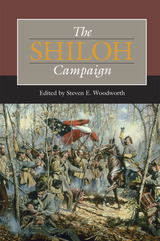
Some 100,000 soldiers fought in the April 1862 battle of Shiloh, and nearly 20,000 men were killed or wounded; more Americans died on that Tennessee battlefield than had died in all the nation’s previous wars combined. In the first book in his new series, Steven E. Woodworth has brought together a group of superb historians to reassess this significant battleandprovide in-depth analyses of key aspects of the campaign and its aftermath.
The eight talented contributors dissect the campaign’s fundamental events, many of which have not received adequate attention before now. John R. Lundberg examines the role of Albert Sidney Johnston, the prized Confederate commander who recovered impressively after a less-than-stellar performance at forts Henry and Donelson only to die at Shiloh; Alexander Mendoza analyzes the crucial, and perhaps decisive, struggle to defend the Union’s left; Timothy B. Smith investigates the persistent legend that the Hornet’s Nest was the spot of the hottest fighting at Shiloh; Steven E. Woodworth follows Lew Wallace’s controversial march to the battlefield and shows why Ulysses S. Grant never forgave him; Gary D. Joiner provides the deepest analysis available of action by the Union gunboats; Grady McWhineydescribes P. G. T. Beauregard’s decision to stop the first day’s attack and takes issue with his claim of victory; and Charles D. Grear shows the battle’s impact on Confederate soldiers, many of whom did not consider the battle a defeat for their side. In the final chapter, Brooks D. Simpson analyzes how command relationships—specifically the interactions among Grant, Henry Halleck, William T. Sherman, and Abraham Lincoln—affected the campaign and debunks commonly held beliefs about Grant’s reactions to Shiloh’s aftermath.
The Shiloh Campaign will enhance readers’ understanding of a pivotal battle that helped unlock the western theater to Union conquest. It is sure to inspire further study of and debate about one of the American Civil War’s momentous campaigns.
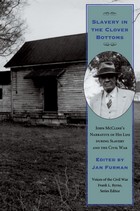
Born into slavery on a Tennessee plantation, John McCline escaped from bondage, worked for the Union Army in the Civil War, and eventually found a new life in the American West. Slavery in the Clover Bottoms is his own story, recollected in later years, of his life as a slave and as a free man.
McCline’s memoirs, completed in the 1920s and now published for the first time, vividly describe the James Hoggatt plantation in Davidson County: the work and routine of slaves; their religious, family, and social life; the behavior of the overseers; and the atmosphere of violence under Mrs. Hoggatt’s omnipresent whip. McCline tells of how he worked with livestock, a boy doing a man’s job, until he ran away with the Thirteenth Infantry of Michigan late in 1862, when he was little more than ten years old. For the next two-and-a-half years, young John worked as a teamster and officers’ servant, and during that time he witnessed some of the Civil War’s most famous battles—such as Murfreesboro, Chickamauga Creek, and Lookout Mountain—as well as Sherman’s march through Georgia.
McCline worked in Michigan, Chicago, and St. Louis after the war. He eventually made his way to Colorado, where his skill with horses helped him find employment with James John Hagerman, whose son Herbert would later be appointed governor of New Mexico Territory. McCline lived in Santa Fe from 1906 until his death in 1948 and became a leader in that city’s black community. During that period Herbert Hagerman encouraged McCline to write his memoirs and contributed an introduction that also appears in this volume. Jan Furman’s introduction puts McCline’s story in context, and her notes to the text clarify references.
Slavery in the Clover Bottoms joins an important body of newly published slave narratives. It provides a vast amount of firsthand detail about slavery and the Civil War and is particularly notable for presenting a former slave’s perspective on Sherman’s march. Its compelling story spans a continent and tells us much about relationships between the races in the middle and late nineteenth century.
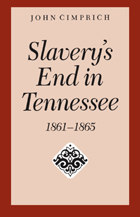
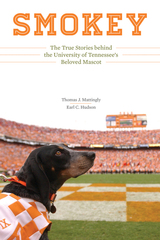
For this entertaining and enlightening book, UT sports historian Thomas J. Mattingly has teamed up with longtime Smokey owner Earl C. Hudson to tell the stories of the nine hounds that have been top dog on campus for more than half a century. It was the Rev. Bill Brooks, Hudson’s brother-in-law, whose prize-winning dog “Brooks’ Blue Smokey,” became the first mascot by winning a student body-led contest at a home football game in 1953. The Coonhound breed was selected because it was native to the state, and several (no one remembers exactly how many) were brought onto the field at halftime to compete. But Smokey stole the show when he threw back his head and howled. The crowd cheered, and Smokey howled again. The raucous applause and barking built to a frenzy. The enthusiastic hound won the hearts of the Volunteer faithful that day, and he and the dogs that followed have remained among the University of Tennessee’s most popular symbols ever since.
The authors have interviewed Smokey’s former handlers, university archivists, sports journalists, and local historians as well as legions of longtime fans. Their recollections provide not only the background of the mascot but a history of UT athletics as well. Vol fans will enjoy reading about Smokey’s adventures throughout the years, from his kidnapping in 1955 by mischievous Kentucky students to his confrontation with the Baylor Bear at the 1957 Sugar Bowl to the time he suffered heat exhaustion at the 1991 UCLA game and was listed on the Vols’ injury report until his return later in the season.
Filled with photographs and memorabilia, including vintage game programs, football schedules, letters, cartoons, and more, this book brings to life the magic of UT football and the endearing canines that have become such an indispensable part of the experience.
THOMAS J. MATTINGLY is the author of Tennessee Football: The Peyton Manning Years, The University of Tennessee Football Vault: The Story of the Tennessee Volunteers, 1891-2006, The University of Tennessee All-Access Football Vault and The University of Tennessee Trivia Book. He writes about Vol history on his Knoxville News Sentinel blog, “The Vol Historian.”
EARL C. HUDSON’s family have cared for the Smokeys since 1994.

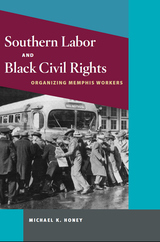
Winner of the Charles S. Sydnor Award, given by the Southern Historical Association, 1994. Winner of the James A. Rawley Prize given by the Organization of American Historians, 1994. Winner of the Herbert G. Gutman Award for an outstanding book in American social history.

Selected by Civil War Interactive as One of the Top Civil War Books of All Time
On April 12, 1862—one year to the day after Confederate guns opened on Fort Sumter and started the Civil War—a tall, mysterious smuggler and self-appointed Union spy named James J. Andrews and nineteen infantry volunteers infiltrated north Georgia and stole a steam engine called the General. Racing northward at speeds approaching sixty miles an hour, cutting telegraph lines and destroying track along the way, Andrews planned to open East Tennessee to the Union army, cutting off men and matériel from the Confederate forces in Virginia. If they succeeded, Andrews and his raiders could change the course of the war. But the General's young conductor, William A. Fuller, chased the stolen train first on foot, then by handcar, and finally aboard another engine, the Texas. He pursued the General until, running out of wood and water, Andrews and his men abandoned the doomed locomotive, ending the adventure that would soon be famous as The Great Locomotive Chase. But the ordeal of the soldiers involved was just beginning. In the days that followed, the "engine thieves" were hunted down and captured. Eight were tried and executed as spies, including Andrews. Eight others made a daring escape to freedom, including two assisted by a network of slaves and Union sympathizers. For their actions, before a personal audience with President Abraham Lincoln, six of the raiders became the first men in American history to be awarded the Medal of Honor—the nation's highest decoration for gallantry.
Americans north and south, both at the time and ever since, have been astounded and fascinated by this daring raid. But until now, there has not been a complete history of the entire episode and the fates of all those involved. Based on eyewitness accounts, as well as correspondence, diaries, military records, newspaper reports, deposition testimony and other primary sources, Stealing the General: The Great Locomotive Chase and the First Medal of Honor by Russell S. Bonds is a blend of meticulous research and compelling narrative that is now considered to be the definitive history of "the boldest adventure of the war."

In this newly revised second edition of his classic guidebook, Matt Spruill revisits his standard-setting tours of the Chattanooga National Military Park, providing updates and new directions after twenty years of park improvements. He recounts the story of the November 1863 battle of Chattanooga using official reports and observations by commanding officers in their own words. The book is organized in a format still used by the military on staff rides, allowing the reader to understand how the battle was fought and why leaders made the decisions they did.
Unlike other books on the battle of Chattanooga, this work guides the reader through the battlefield, allowing both visitor and armchair traveler alike to see the battle through the eyes of its participants. Numerous tour “stops” take the reader through the battles for Chattanooga, Wauhatchie, Lookout Mountain, Orchard Knob, Missionary Ridge, and Ringgold Gap. With easy-to-follow instructions, extensive and updated tactical maps, eyewitness accounts, and editorial analyses, the reader is transported to the center of the action. With this second edition, Storming the Heights will continue to be the go-to guide for Civil War enthusiasts interested in touring this sacred ground.

A beloved member of the country music community, David “Stringbean” Akeman found nationwide fame as a cast member of Hee Haw. The 1973 murder of Stringbean and his wife forever changed Nashville’s sense of itself. Millions of others mourned not only the slain couple but the passing of the way of life that country music had long represented.
Taylor Hagood merges the story of Stringbean’s life with an account of murder and courtroom drama. Mentored by Uncle Dave Macon and Bill Monroe, Stringbean was a bridge to country’s early days. His instrumental savvy and old-time singing style drew upon a deep love for traditional country music that, along with his humor and humanity, won him the reverence of younger artists and made his violent death all the more shocking. Hagood delves into the unexpected questions and uneasy resolutions raised by the atmosphere of retribution surrounding the murder trial and recounts the redemption story that followed decades later.
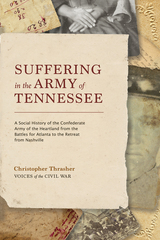
Winner of the 2022 Douglas Southall Freeman Award!
Confederate historiography of the Civil War is rich with stories of leaders and decision makers—oft-repeated names immortalized by their association with America’s great trial of the 1860s. But while scholarship exploring the roles of Confederate generals and politicians abounds, a major part of the story remains untold: that of the ordinary people who became soldiers and turned the very pages of Civil War history.
Part of the Voices of the Civil War series, Suffering in the Army of Tennessee doesn’t just draw upon one single diary or letter collection, and it does not use brief quotations as a way to fill out a larger narrative. Rather, across eight chapters spanning the Atlanta Campaign to the Battle of Nashville in 1864, Thrasher draws upon a remarkably broad set of primary sources—newspapers, manuscripts, archives, diaries, and official documents—to tell a story that knits together accounts of senior officers, the final campaigns of the Western Theater, and the experiences of the civilians and rebel soldiers who found themselves deep in the trenches of a national reckoning. While volumes have been written on the Atlanta Campaign or the Battles of Nashville and Franklin, no previous historian has constructed what amounts to a sweeping social history of the Army of Tennessee—the daily details of soldiering and the toll it took on the men and boys who mustered into service foreseeing only a small skirmish among the states.
While this volume will appeal to Civil War buffs and military history scholars, its accessible structure and engaging narrative style will likewise captivate American history enthusiasts, students, and general readers.
READERS
Browse our collection.
PUBLISHERS
See BiblioVault's publisher services.
STUDENT SERVICES
Files for college accessibility offices.
UChicago Accessibility Resources
home | accessibility | search | about | contact us
BiblioVault ® 2001 - 2024
The University of Chicago Press









